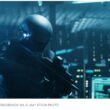Transmitter noise/receiver desense primer
When locating multiple stations at a single site, several precautions must be taken to guard against interference to all stations at the site. Among the factors that must be considered are transmitter noise and receiver desensitization (desense). There are tools that can be used to calculate and solve transmitter noise and receiver desense problems.
Antenna isolation
Antenna isolation is one of the first factors that must be known before dealing with transmitter noise and receiver desense (TNRD). Antenna isolation can be achieved through horizontal or vertical separation of antennas. Often, the situation allows no choice between vertical or horizontal separation. If the antennas are located on the same tower, then the isolation must be calculated for vertical separation. If the antennas are located on separate towers, then the formula for horizontal separation is usually used. The attenuation formula for free-space propagation calculates the amount of isolation provided by horizontal separation:
A 5 32.3 1 20logD 1 20logF
where D is distance in miles and F is frequency in megahertz.
Often, the antenna separation is much less than a mile, so it is easier to measure in terms of feet. When the distance is measured in feet, be sureto convert it into miles before entering it into the formula. The formula assumes that the two antennas are halfwave dipoles. If gain antennas are used, the gain figures, in decibels relative to a halfwave dipole (dBd), will reduce the amount of isolation between the antennas. See Figure 1 below.
To calculate the amount of isolation for vertically separated antennas, the following formula should be used:
where F represents frequency in megahertz, and V represents vertical antenna separation in feet. Note that the antennas should be exactly collinear (one directly in a vertical line with the other) to achieve the maximum isolation. The formula does not take into account any tower coupling that might decrease the amount of isolation between the two antennas. Separation is measured from center to center on the antennas. See Figure 2 at the right.
Often, the antennas are neither exactly vertically separated nor exactly horizontally separated, but some combination of the two. (See Figure 3 on page 20.) The isolation will be better (more like vertical) if each antenna is not in the other antenna's beamwidth. The exact isolation figure is best determined by measurement. The measurement is made as shown and described in Figure 4 on page 22.
Another way to achieve isolation is to use directional antennas (if the situation permits), thus reducing the interfering signal level.
Isolation by filtering
Often, sufficient isolation cannot be achieved by antenna separation or orientation alone. More isolation is needed. Usually, the additional isolation can be achieved through the use of RF filters – unless the frequency separation between the desired and undesired signals is too narrow. We will look at transmitter noise and receiver desense as separate issues. Usually, when one exists, the other does as well. Furthermore, if the transmitter noise problem can be solved using filters, the receiver desense problem can usually be solved with even less isolation – filters or antenna isolation.
Transmitter noise
High-density communications sites are always "hot" with RF energy. Transmitters generate a broad band of RF noise generally called sideband noise. Most of this noise is generated in the exciter section and amplified by following stages on out through the transmitter output stages. Some transmitters are worse than others in generating this broadband noise spectrum. (Some transmitters seem to be little more than a broadband noise generator.) The type of modulation also affects the noise level. (How about those digitally modulated broadband noise generators called paging transmitters? Ouch! Don't let one near your analog receiver.)
The question that must be answered before you look at filters and antenna relocation is how much does the sideband noise from the offending transmitter have to be reduced to cause minimal degradation to your receiver? A better question might be: How much additional isolation do we need, and how do we get it? It doesn't matter how much we already have if it isn't enough.
In this example, a single, specific transmitter is generating sideband noise that is seriously degrading reception at our receiver. Nothing can be done at our receiver to mitigate this problem. The cure has to be applied to the offending transmitter.
A practical test method can be used to determine how much additional isolation is necessary to reduce the offending transmitter noise level to a non-interfering or acceptable level (see Figure 5 on page 24). Here, an attenuator is placed in the transmission line preceding the receiver input. A directional coupler is placed between the attenuator and the receiver input. A signal from the signal generator is fed into the coupled port of the directional coupler. The signal generator is set to the receiver frequency and adjusted to produce 12dB sinad on the sinad meter. At first, set the attenuator to 0 attenuation. Then, when the offending transmitter comes up, increase the attenuation until the sinad meter again indicates nearly 12dB sinad. The amount of attenuation set on the attenuatoris the amount of additional isolation needed to mitigate the transmitter noise problem.
Suppose that the attenuator setting was 20dB. This means that a filter must be placed on the offending transmitter to reduce the sideband noise at the receiver frequency by 20dB. A high-pass or low-pass notch filter may solve the problem. If the filter is placed on the output of the transmitter, make sure it can handle the power output of the transmitter safely. Do not exceed the rating of the filter. In many cases, the filter can be effective when placed between the exciter and the power amplifier stages. This reduces the power-handling requirement of the filter.
Receiver desense
Receiver desense and transmitter noise generally go hand in hand – if you have one, it is likely that you will have the other. Receiver desense is caused by a strong off-frequency signal that is swamping or overloading the receiver – usually in the front end. Such a strong signal will cause the receiver to become practically non-functional. In such a condition the receiver can hardly respond to any weak signals.
Again, the question arises: How much additional isolation is needed to mitigate the problem? There is a way to determine how much additional attenuation is needed. (See Figure 6 below.) First, the input level of the offending transmitter must be measured at the receiver input. Connect a spectrum analyzer in place of the receiver, and when the offending transmitter is active, measure the level. Then, using the setup shown in Figure 6 set signal generator A to produce 12dB sinad on the sinad meter. With signal generator B set to the frequency of the offending transmitter and set for a CW signal, increase the output level of generator B until the receiver overloads and the sinad reading is degraded by a couple of decibels. Reduce the output level of generator B until the sinad meter again indicates 12dB sinad. Record the output level of generator B. It is important that signal generator B has good spectral purity, or low sideband noise. Otherwise, we might be seeing receiver degradation due to sideband noise and not due to receiver overload.
Suppose that the recorded output level of generator B was -40dBm and that the level of the offending transmitter signal was measured at -20dBm. This means that an additional isolation or attenuation of 20dB is necessary to mitigate the receiver desense problem. The cure must be applied at the receiver. A notch filter at the receiver input might do the trick. The notch would be tuned to the frequency of the offending transmitter and should have little insertion loss at the desired frequency.
Final notes
The test methods described here are for equipment already in place. If you are doing a feasibility study for a proposed installation, a different approach would be required. This approach would require knowledge of the specific transmitter's sideband noise levels and the specific receiver's desense characteristics. TNRD charts should be available from manufacturers for use in determining how much isolation would be necessary to alleviate any interference problems if it is possible at all. Sometimes, the only recourse is to relocate. This is not a desirable alternative but may be better than trying to force-fit a station into a hostile RF environment where it can never work satisfactorily. Software such as ComSite Plus from Douglas Integrated Software of Tallahassee, FL, is useful in running what-if scenarios using specific models of radio equipment and filters.
Until next time – stay tuned!













